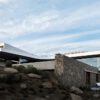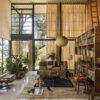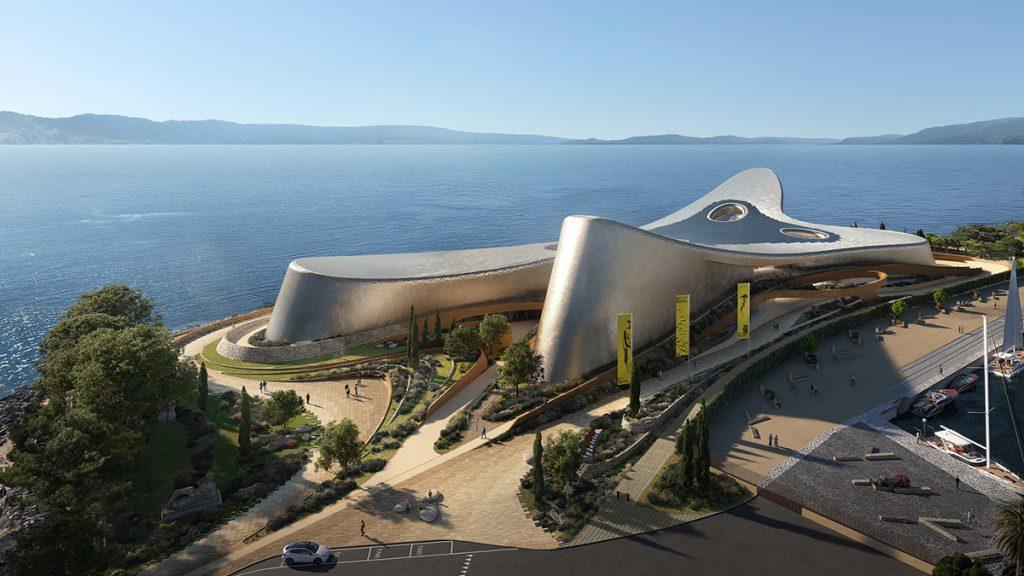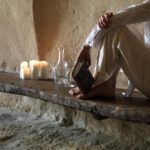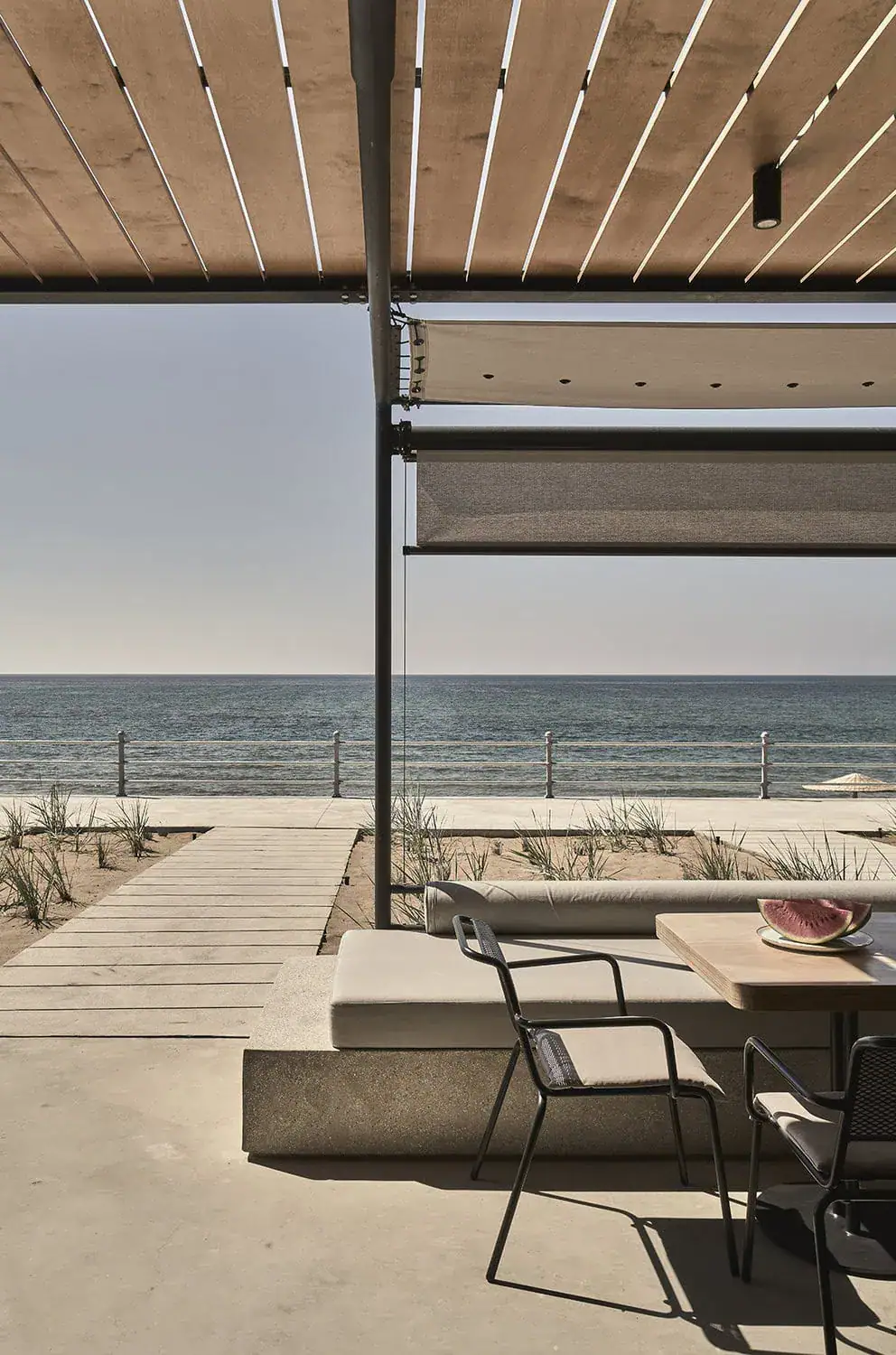After nearly two decades of planning, Zaha Hadid Architects have begun construction of the Centro della Cultura del Mediterraneo, which is more than just a cultural center for Reggio Calabria. It aims to connect people – and to significantly advance the city.
The ambitions in Reggio Calabria are high. The southernmost major city on the Italian mainland hopes to become one of the most important tourist destinations in the Mediterranean in the coming years – and is upgrading accordingly. A comprehensive urban and environmental planning program is intended to increase the city’s appeal to visitors and improve the quality of life for local residents along the Strait of Messina.

One element of the redevelopment plan is the Centro della Cultura del Mediterraneo – the Center for Mediterranean Culture. Zaha Hadid Architects were awarded the project back in 2007, and in February 2025, the foundation stone was finally laid. As part of the construction, the previously run-down waterfront promenade of Reggio Calabria is also being redesigned. ZHA’s design integrates the cultural center into the promenade, creating an urban park directly by the sea. In short: people benefit from a renewed access to the waterfront, offering panoramic views of the Strait of Messina – and Sicily beyond.
A Sensory Narrative
The Centro della Cultura del Mediterraneo will span an area of 24,000 square meters. Its main components include 7,000 square meters of exhibition galleries, a 4,500-square-meter aquarium, an auditorium for cultural events, conference spaces, educational areas, a bookstore, and a restaurant with a bar overlooking the harbor.


“The interiors of the center create a visual and sensory narrative,” say Zaha Hadid Architects. “They are inspired by the Mediterranean Sea and the lush flora and fauna of the Strait of Messina. With its vibrant colors and organic forms, marine life serves as the main inspiration for the design of the auditorium, where coral hues recall the vitality of the maritime ecosystem. Flowing, clear water is reflected throughout the interior spaces of the aquarium. Together with the sea creatures within, it creates an immersive experience. The spirit of exploration, rooted in the long seafaring history of the Mediterranean, is expressed in the play of light and shadow in the galleries – inviting visitors to discover each exhibition anew.”
A Focus on Sustainability
The building is divided into four volumes, connected by a central two-story atrium that serves as the main entrance. The center’s dynamic, organic design is intended to harmonize with the coastal landscape while remaining functional. A key consideration in the design was the local climate. Courtyards provide shade and offer protection from the strong winds typical of the strait. “Depending on orientation, each of these sheltered courtyards opens up views of the harbor to the east, the city to the south, or leads to the western terrace with panoramic views of the strait and Sicily,” explain Zaha Hadid Architects.

The orientation of the building volumes is also based on optimizing natural light and ventilation. The anodized aluminum facade helps regulate the building’s temperature, reducing reliance on artificial climate systems and delivering on a key principle of the concept: sustainability – all while presenting a spectacular design. “The 90 percent opaque facade with generous overhangs is a central element of the design,” says ZHA. “It significantly reduces direct sunlight from all angles – including reflections from the sea – and lowers internal heat buildup.”
A True Center
In addition to hybrid ventilation and an advanced water management system, the Centro will be surrounded by a Mediterranean-inspired park. Featuring sixty plant species native to Italy, it contributes to local biodiversity. Large terraces within the park turn the waterfront into a place where nature and culture not only meet but merge into a truly immersive experience, say the project leads.


“The new Centro della Cultura del Mediterraneo is an ideal addition to Reggio Calabria’s existing archaeology and art museums. It explores the close relationship between Calabria and the Mediterranean – a connection that has shaped the region’s past and will continue to shape its future,” ZHA conclude.
However, there has already been a setback for the former capital of Calabria: Although among the top ten finalists, Reggio Calabria was not selected as Italy’s Capital of Culture 2027. In March, the title was awarded to Pordenone , a city in the northern region of Friuli Venezia Giulia – on the other end of the country.
Text: Michi Reichelt
Photos: Zaha Hadid Architects



